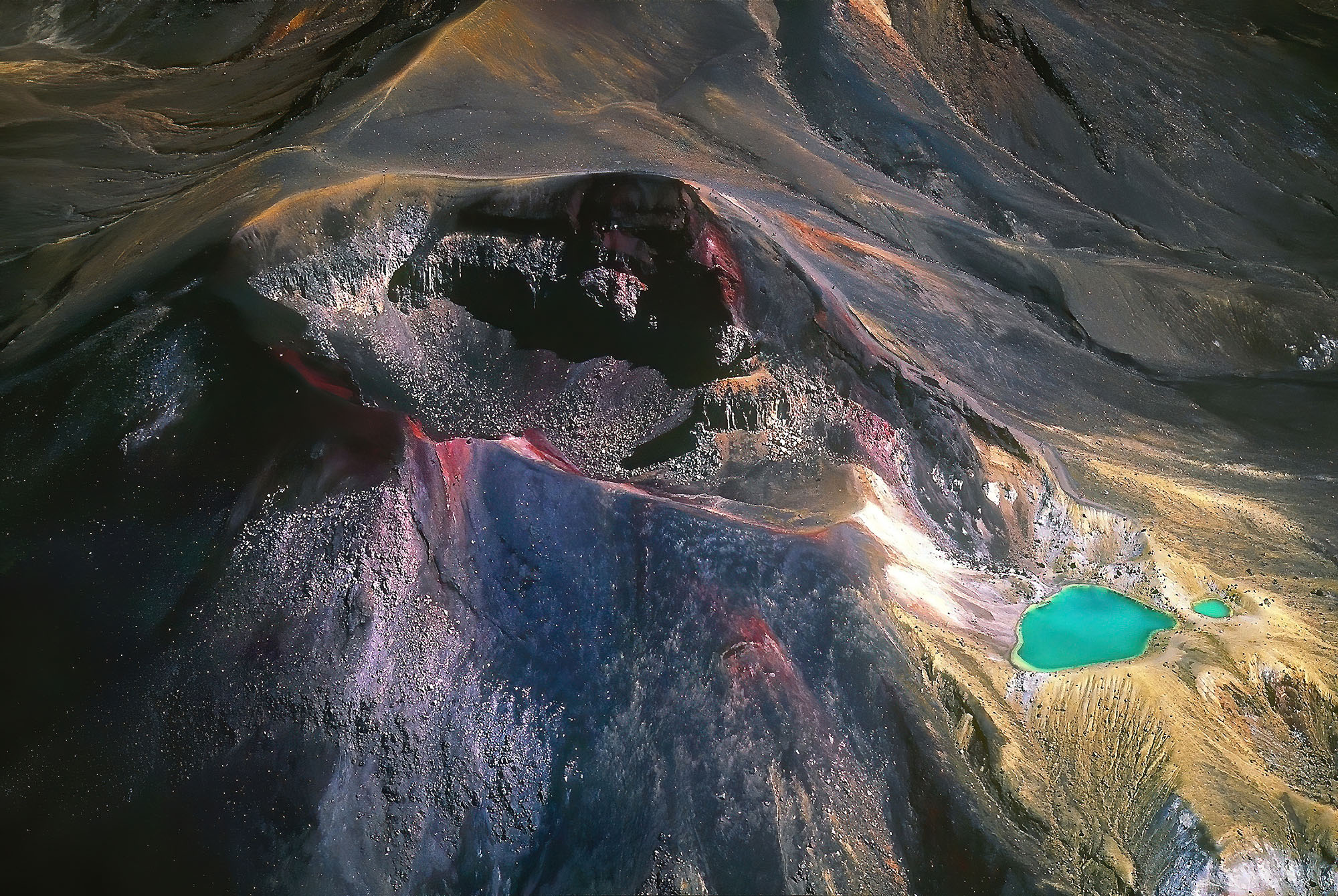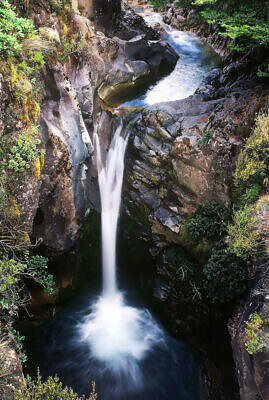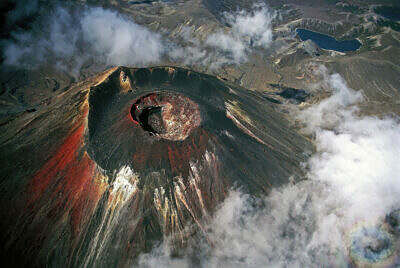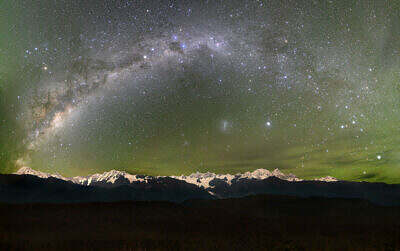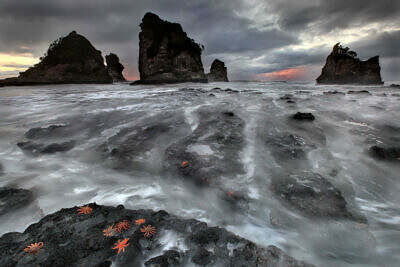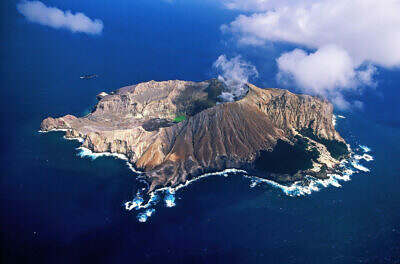This aerial view into the Red Crater of Mount Tongariro with the green Emerald Lakes in New Zealand reveals the extraordinary and ever-changing beauty of explosive volcanism. Mount Tongariro is a 1978 m (6490 ft) high, steep stratovolcano on the North Island of New Zealand and belongs to the Taupo volcanic zone.
-
The geology of New Zealand
Tongariro
- Flow, River of my Soul
- Ngauruhoe
- The Whisper of the Rocks
- Keep Chasing a Dream
- Starscape
- Ring of Fire

